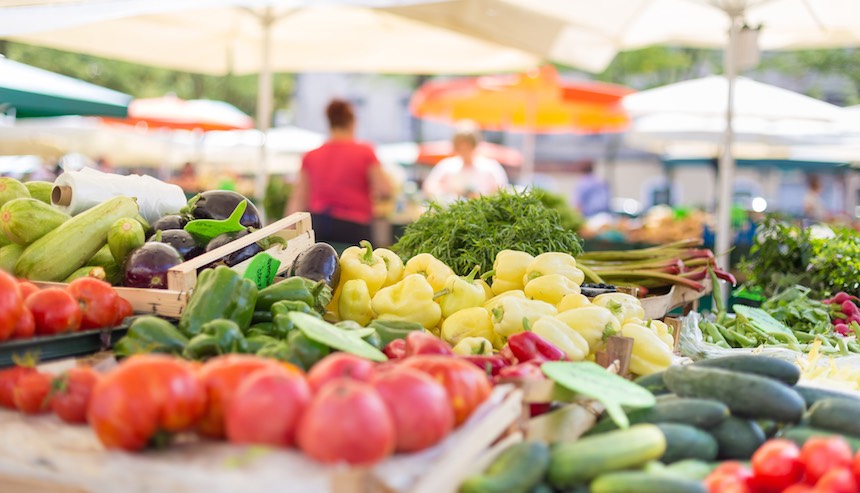Summer is a time to wander farmer’s markets, have picnics in the park and relax at barbecues. What do all three of those activities have in common? Eating. While everybody knows burgers and hot dogs aren’t the best for you, when it comes to other culinary options we associate with the summer, making the healthiest choice isn’t always as obvious.
Last fall, we asked registered dietician Kayleen St. John, Executive Director of Nutrition at Euphebe to talk us through the best and worst fall foods. We reached out to her again for a summer edition. She gives us suggestions for her favorite summer produce and tells us what “healthy” summertime foods we’d do better to avoid.
Her picks for seasonal fruits and veggies
“I love any fresh green in the summer for a light-feeling salad,” says St. John. The next time you’re at the farmer’s market, explore the bounty of leafy greens — whatever’s fresh and local will have more antioxidants, she says. All it takes is a simple dressing of equal parts lemon juice and olive oil, salt and pepper, to bring any summer green to life, she says.
St. John also goes for radishes, which are antioxidant-rich, Vitamin-C powerhouses. And don’t toss the radish greens — you can chop them up to add to a salad, or sautee with garlic and olive oil for a veggie side.
Fruit-wise, cherries are a summer treat, which are also high in potassium and can help alleviate bloat.
St. John loves summer zucchinis, because their high water content makes them a hydrating choice for the summer. She recommends making a zucchini gazpacho, blending the vegetable with onion, olive oil, cashews, basil and lemon juice, served chilled.
Go easy on the juice, though
“A fruit or veggie juice may seem like a ‘light’ lunch option come summertime, but these juices can be a downfall,” she explains. For one, they won’t fill you up, and two, if they have fruit juice, they could cause a blood sugar/insulin spike. Go for smoothies instead — to keep the sugar down, add less than one cup of fruit, and instead focus on fiber-rich greens and protein via nuts or seeds. St. John also adds green tea to hers.
Be wary of “healthy” ice cream replacements
You’ve probably heard of these trendy healthy ice cream alternatives, such as Halo Top or Arctic Zero. Maybe they have less than 300 calories a pint, but that doesn’t mean they’re good for you. “These usually contain a great deal of prebiotic fibers and sugar alcohols, two ingredients known to cause gas and bloating,” St. John explains. (Halo Top contains the sugar alcohol erythritol, while Arctic Zero sweetens with natural sweetener monk fruit. Both ice creams contain hard-to-digest fibers: chicory root in Arctic Zero, and unspecified dietary fiber in Halo Top.) “When in doubt, keep it real and stick to a whole food ingredient list.”
The lowdown on meats
Everybody loves a summer barbecue, and some folks opt for healthier routes than burgers or dogs. But while subbing in tofu or turkey dogs might seem like a low-calorie alternative, they’re often so highly processed, you’re better off with the real thing, says St. John. And in general, watch out for any meats you throw on the grill. According to the National Cancer Institute, animal products cooked at high temperatures or over an open flame release chemicals that may increase the risk of cancer.



















